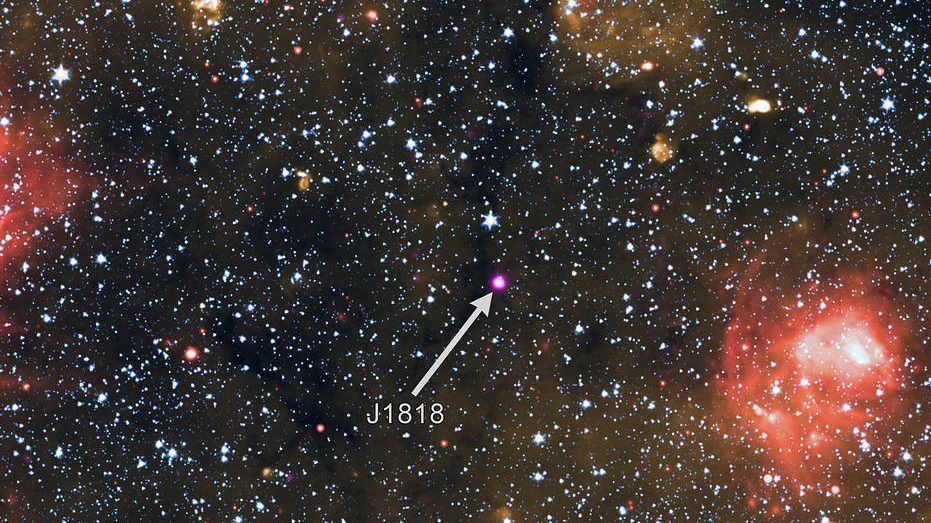This might be the fastest magnetar in the whole galaxy
It's a terrible infant.

A rapidly twirling, ultramagnetic, 500-year-old baby neutron star has been spotted zipping at never-before-seen speeds through the Milky Way.
The flickering X-rays and radio waves of this giant baby — adorably named J1818.0-1607 — would likely have first appeared in the sky when Nicolaus Copernicus, the Polish scientist who proposed that the sun (and not Earth) was the center of the universe, first looked up at the heavens.
If Copernicus had orbital X-ray telescopes or powerful radio receivers, he would have witnessed the birth of a magnetar: a super-rare, violent species of neutron star with extreme, twisted-up magnetic fields. A mere 500 years later (assuming astronomers got its age right), this screaming infant is still spinning faster than any known magnetars, at one revolution every 1.4 seconds. It also may be moving faster than any previously discovered neutron star, of any variety.
Like all neutron stars, J1818.0-1607 would have emerged after the explosive death of a large star — known as a supernova — as the crushed remnant of its core. Neutron stars are tiny in astrophysical terms, no wider than Madison, Wisconsin. But as the densest known objects in the universe other than black holes — full of matter crushed to the point of atoms losing their structural integrity and mushing together to resemble the nucleus of a single giant atom — neutron stars can be as massive as fullsize stars.
Related: From Big Bang to present: Snapshots of our universe through time
Only a minuscule fraction of neutron stars are magnetars. But that isn't the only unusual thing about J1818.0-1607. It's also a pulsar, a type of ultrafast, cosmic lighthouse that dims and brightens with each rotation.
"Only five magnetars including this one have been recorded to also act like pulsars, constituting less than 0.2% of the known neutron star population," researchers involved in the study said in a NASA statement.
Sign up for the Live Science daily newsletter now
Get the world’s most fascinating discoveries delivered straight to your inbox.
To determine the age of the magnetar, the researchers tracked how it slowed over time and estimated the spin rate it was born with. From its starting rotational speed, it would have taken 500 years for the newborn magnetar to slow to its current rate. However, this age estimate is somewhat unreliable, according to a paper published Nov. 26, 2020, in The Astrophysical Journal Letters.
Because the magnetar is so young, astronomers should be able to spot the remnant of the supernova that birthed it, and the researchers may have found it a "relatively large" distance from the magnetar. If the magnetar really is 500 years old and that supernova remnant really is the leftovers of the magnetar's birth, then it's been moving about 8 to 16 million mph (13 to 26 million km/h) through the Milky Way for its entire lifetime — faster than any of the approximately 3,000 other known neutron stars. If, however, astronomers estimated the wrong age for the magnetar, or the researchers identified the wrong remnant, then this youngster may not be moving quite so fast.
But although this baby is a wee newborn in astronomical terms, there may be an even younger magnetar in the Milky Way, though perhaps a slower-moving one. As Live Science previously reported, researchers think they may have witnessed the actual birth of a magnetar in a distant galaxy last year, making that magnetar no older than a human toddler.
Originally published on Live Science.










